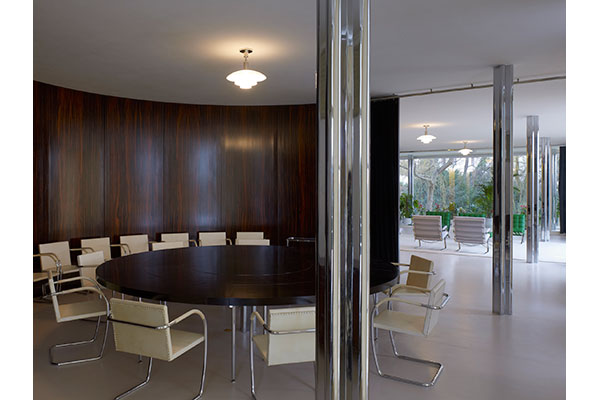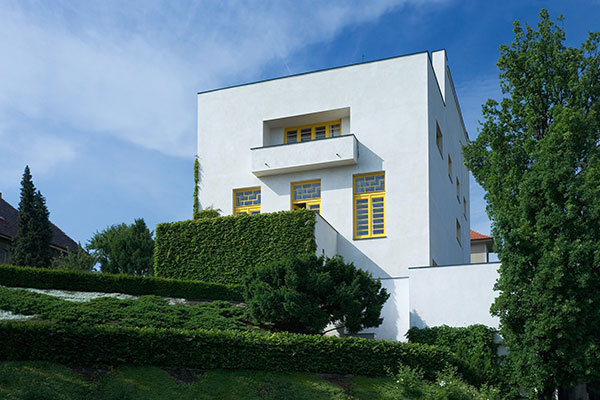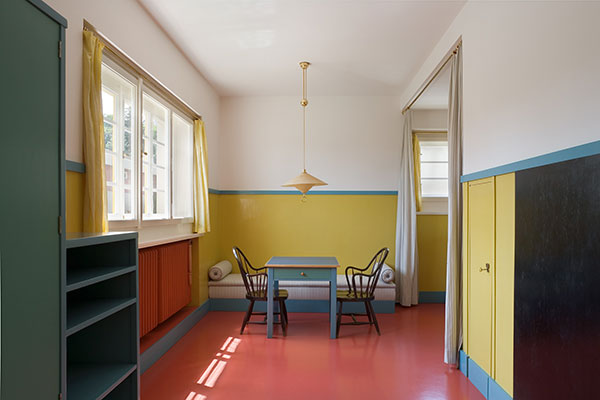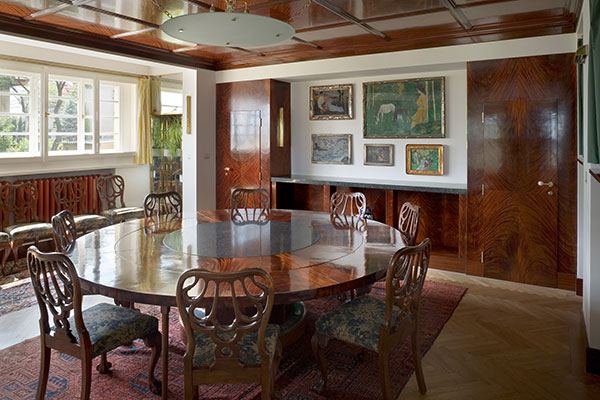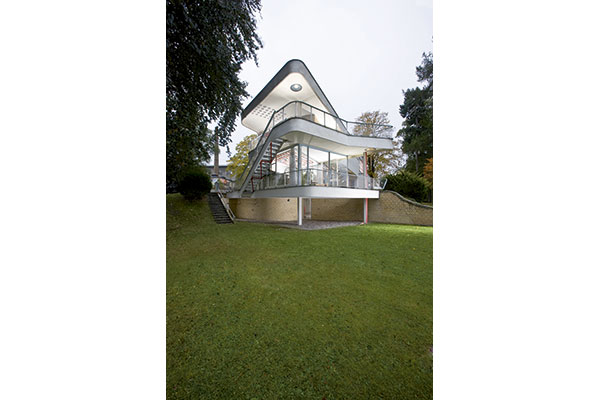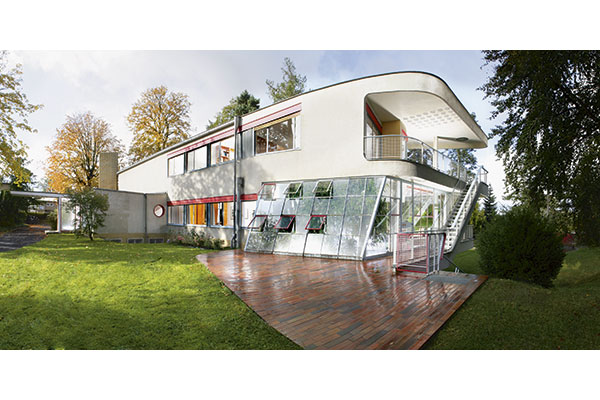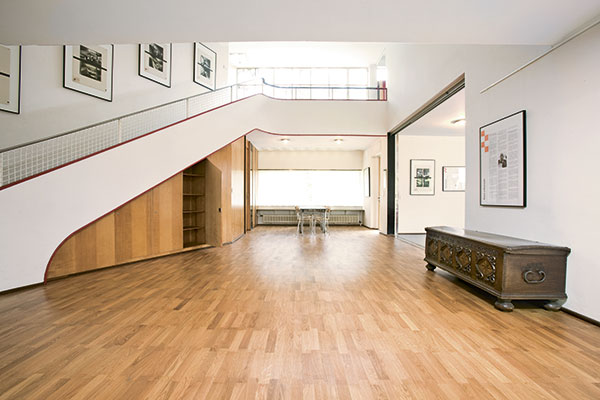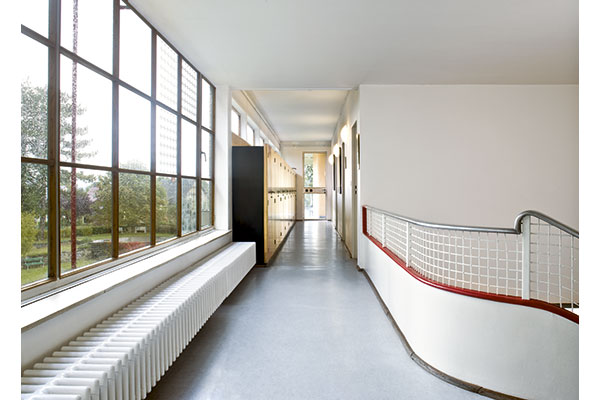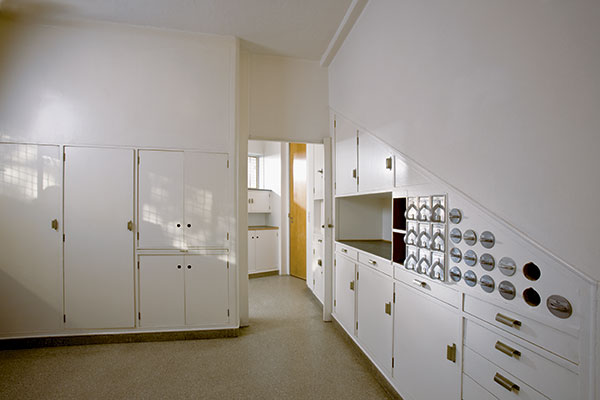City Icons: Amsterdam - Almost sold out!
Festive City Icons Kick Off with Talk by Linda Vlassenrood
MORE MIES - Pure Architecture in Haus Lange Haus Esters
An Elementalist and Mediterranean Architecture
Through a Bauhaus Lens: Edith Tudor-Hart and Isokon
Modernism Week Lecture: 10 Years of Iconic Houses
Aluminaire House Grand Opening
Exhibition Icons of the Czech Avant-Garde
Icon for Sale - Loos Villa: Haus Horner
SPECIAL – Iconic Dreams Europe - Sleep in an Iconic House!
SPECIAL – Iconic Dreams North America - Sleep in an Iconic House!
SPECIAL – German Greats!
SPECIAL - Vacances en France!
SPECIAL - Casas Icónicas en España!
SPECIAL – Dutch Delights!
SPECIAL – Iconic Artist Residencies
SPECIAL – Northern (High)Lights!
SPECIAL – Iconic Housing
SPECIAL – Women & Iconic Houses
Winy Wants a World Wonder
Welcome Atelier Volten!
Public Screenings and Private Streaming of Pioneers of the Dutch Modern House
Sleep in a Modernist Gem – Huis Billiet in Bruges
Iconic Houses in The Netherlands - 100 Years Van Zessen House
Exclusive Tour and Film Screening Package
The Last House Designed by Adolf Loos Will Be Built in Prague
Icons of the Czech Avantgarde
Icon for Sale - Casa Legorreta
Rietveld Day: 200 Enthusiasts Explored 3 Utrecht Icons
Hurray! 10 Years Iconic Houses
7th International Iconic Houses Conference A Huge Success
Meet Conference Co-Chair Iveta Černá
Meet Conference Co-Chair Maria Szadkowska
Eighteen Iconic Houses Under One Roof
17 June - 'Pioneers-film' Screening Amersfoort
Iconic Houses in The Netherlands - Van Eesteren House Museum
Welcome Margarete Schütte-Lihotzky Zentrum in Vienna!
Welcome Vila Volman! Jewel of Czech Functionalism
Movie Night: Adolf Loos- Revolutionary Among Architects
'Inside Iconic Houses' Case Study House #26 Webcast in Webshop
Inside Iconic Houses at Taut’s Home in Berlin
Rediscovering Forgotten Loos Interiors in Pilsen
'Inside Iconic Houses' - Online Tour Program
Iconic Houses in The Netherlands - The Diagoon House
Iconic Houses in The Netherlands - Rietveld Schröder House
Rietveld Houses Owners Association
Corberó Space: New Life for Hidden Jewel
Iconic Houses in The Netherlands - Pierre Cuypers' House and Workshops
Reeuwijk Celebrates Completion of Restoration Rietveld Homes!
Iconic Houses in The Netherlands - Van Doesburg Rinsema House
Welcome Rietveld's Van Daalen House!
Architect Harry Gessner Passed Away at 97
Watch Pioneers of the Dutch Modern House Now On Demand
Icon Saved: Dorchester Drive House
Welcome Umbrella House!
Iconic Houses in the Netherlands – Berlage’s Masterpiece
Iconic Houses in The Netherlands - Het Schip
Inside Iconic Houses - Tour of Maison Cazenave
Inside Iconic Houses Tours Vizcaya Museum & Gardens in Miami
Casa Masó Celebrates 10 Year Anniversary
Inside Iconic Houses tours Roland Reisley's Usonian Frank Lloyd Wright House
Rietveld’s Experimental Housing in Reeuwijk Saved
Serralves Villa after restoration
Portraits of the Architect - Interview with Gennaro Postiglione
Test Labs for New Ideas - Interview with Natascha Drabbe
Inside Iconic Houses - Isokon Building
Inside Iconic Houses - 16 December: Sunnylands with Janice Lyle
BCN-BXL Coderch-De Koninck - Beyond Time
New Chairman Architect Nanne de Ru on The Perfect Platform
Health and Home - Interview with Beatriz Colomina
A Life Less Ordinary – Interview with Valentijn Carbo
Invisible Women - Interview with Alice T. Friedman
Winy Maas on the Green Dip
Anita Blom on Experimental Housing of the 1970s
Women’s Worlds - Interview with Natalie Dubois
The Culture of Living - Interview with Robert von der Nahmer
Hetty Berens: A Fresh Take on Modernism
Niek Smit on Supporting Modern Heritage
Alice Roegholt on Amsterdam’s Working-Class Palaces
July is Iconic Houses Month
Hans van Heeswijk on The Pioneers of the Dutch Modern House
Wessel de Jonge on Dutch Icons at Risk
Save Maison Zilveli - Sign the Petition!
How a Building Tells a Story - Recorded Event
Toolkit for Owners of a Modern House
13 Aalto Sites Nominated for UNESCO World Heritage
Villa Beer At Risk - Sign the Petition!
Business Cards of Stone, Timber and Concrete in the Brussels Region 1830-1970
Exhibiting & Visiting Modernist Monuments
Fostering Well-Researched Responsible Design
ICONS AT RISK
Enjoy a virtual visit to the California House and a Q&A with architect Peter Gluck
Exhibition 'Modernism and Refuge'
A Hidden Gem of Postmodernism
New Centre for Historic Houses of India
An Online Chronicle of the Douglas House
Villa Henny, geometric style icon in The Netherlands
A Mendini temple in Amsterdam
IH-lectures USA & Canada Feb 2020 on Melnikov House
Sponsors and Friends
An Afternoon with the Glucks
Chandler McCoy on Making Modern Houses Sustainable
Catherine Croft: Getting Away from the Demolition Mentality in the UK
Patrick Weber on Discovering an Unknown Icon
Fiona Fisher on Iconic Interiors
Jocelyn Bouraly on Villa Cavrois
Mireia Massagué on finding success through a new kind of partnership
Danish Moderns – Looking Back at Our Mini-Seminar
Venturo house complements Exhibition Centre WeeGee’s offering
Lecture report: Remembering Richard Neutra
Hôtel Mezzara and the Guimard Museum project
We welcome 13 new members!
BREAKING NEWS: 8 Wright Sites Inscribed on Unesco World Heritage List!
LECTURE 29 August - Raymond Neutra: My Father and Frank Lloyd Wright
Iconic Reads
Our Badge of Honour
Iconic Houses End Year Message
City-ordered rebuild of landmark house stirs debate: Appropriate or overreach?
Kohlberg House Restoration in Progress
Planned Demolition of Rietveld Homes in Reeuwijk
Renovation Gili House in Crisis
An Iconic Saga
Restoring Eileen Gray’s Villa E-1027 and Clarifying the Controversies
Modernism on the East Coast
Iconic Houses in Latin America
Conference testimonials
House Tours May 2018
Expert Meetings
Natascha Drabbe - Iconic Houses: The Next Chapter
Terence Riley -KEYNOTE SPEAKER- on Philip Johnson
New era for Villa E-1027 and Cap Moderne
Hilary Lewis on Philip Johnson and his Glass House
John Arbuckle on Great House Tours
William D. Earls on the Harvard Five in New Canaan
Stover Jenkins on Working for Philip Johnson
Frederick Noyes on his Father’s House
Scott Fellows and Craig Bassam on their Passion for Preservation
Jorge Liernur -KEYNOTE SPEAKER- on Latin American Modernism(s)
Fabio Grementieri on Modernism in Argentina
Catalina Corcuera Cabezut on Casa Luis Barragán
Renato Anelli on Lina Bo Bardi’s Casa de Vidro
Tim McClimon on Corporate Preservation
Amanda Nelson on Building Donor Relationships
John Bacon on Planned Giving
Jean-Paul Warmoes on the Art of Fundraising in America
Chandler McCoy on Why Less is More
Katherine Malone-France on Moving with the Times
Anne Mette Rahbæk on Philanthropic Investments and Preservation
Peter McMahon on Saving Modern Houses on Cape Cod
Toshiko Kinoshita on Japanese Modern Heritage Houses
Roland Reisley on Life in a Frank Lloyd Wright House
5th Iconic Houses Conference May 2018
Kristin Stone, Pasadena Tour Company
Restoring the past: The Diego Rivera and Frida Kahlo Home Studio
Behind the Scenes: Hendrick de Keyser Association
Crosby Doe, Architecture for Sale
Latin America Special – Focus on Mexico
De Stijl in Drachten
Preserving the Nancarrow House-Studio
Meet the Friends - Nanne de Ru
Latin America Special – Focus on Brazil
Jan de Jong’s House is Latest Hendrick de Keyser Acquisition
Stay in a Belgian Modernist Masterpiece
In Berlin’s Modernist Network
Rietveld-Schröder House Celebrates De Stijl Anniversary
Meet Our New Foundation Board Members
Maintaining Aalto's Studio – Linoleum Conservation
Virtual Tour of a Papaverhof Home in 3D
Getty Grant for Villa E-1027
Plečnik House in Ljubljana
Iconic Dacha
Iconic Houses: A Bohemian Road Trip
Work in Progress: Capricho de Gaudí
11 Le Corbusier Homes now on Unesco World Heritage List
At home with Le Corbusier
Henry van de Velde’s Study in Haus Hohe Pappeln Restored
Lynda Waggoner reports
A Conference to Remember
4th International Iconic Houses Conference
Guest of Honor - Harry Gesner
Fallingwater: European Lecture Tour
Wright Plus 2016 Walk
Susan Macdonald, Getty Conservation Institute
John Mcllwee, Garcia House
Meet the Friends – Elisabeth Tostrup
Iconic Houses: The Story So Far
Willie van Burgsteden, designer Iconic Houses
Buff Kavelman, Philanthropic Advisor
Meet the Friends - Frederick Noyes
Sheridan Burke, GML Heritage
Meet the Friends - Raymond Neutra
Sidney Williams, Frey House
Franklin Vagnone and Deborah Ryan, Museum Anarchists
Meet the Friends - James Haefner
Toshiko Mori, architect
Malachi Connolly, Cape Cod Modern House Trust
Meet the Friends - Penny Sparke
Lucia Dewey Atwood, Eames House
Cory Buckner, Mutual Housing Site Office
Jeffrey Herr, Hollyhock House
Speaking Volumes: Building the Iconic Houses Library
Sarah Lorenzen, Neutra VDL Studio and Residences
Ted Bosley, Gamble House
Keeping It Modern - Getty Conservation Grants
Meet the Friends - Thomas Schönauer
Wim de Wit, Stanford University
Linda Dishman, Los Angeles Conservancy
Jesse Lattig, Pasadena Heritage
Join us in Los Angeles! Update
Work in Progress: Casa Vicens
Work in Progress: Van Wassenhove House
Work in Progress: Villa Cavrois
Work in Progress: The Pearlroth House
Conference calls!
Follow us!
Third Iconic Houses Conference a huge success
Conference House Tours Barcelona
Marta Lacambra, Fundació Catalunya-La Pedrera
Natascha Drabbe, Iconic Houses Foundation
Special speaker Oscar Tusquets
Jordi Tresserras, UNESCO Network ‘Culture, tourism and development’
Christen Obel, Utzon Foundation
Elena Ruiz Sastre, Casa Broner
Fernando Alvarez Prozorovich, La Ricarda
Tim Benton, Professor of Art History (Emeritus)
Susana Landrove, Docomomo Spain
Rossend Casanova, Casa Bloc
Conference Program 25 November 2014
Jordi Falgàs, Casa Rafael Masó
Documentary La Ricarda
Marga Viza, Casa Míla/La Pedrera
Celeste Adams, Frank Lloyd Wright Trust
Conference 25 November 2014 at La Pedrera
Henry Urbach, The Glass House
Victoria & Albert Museum London November 12
Tommi Lindh, new director of the Alvar Aalto Foundation and Museum
Iveta Černá, Villa Tugendhat
Lynda Waggoner, Fallingwater
Kimberli Meyer, MAK Center
Rent a house designed by Gerrit Rietveld
Barragán House on Screen
Gesamtkunstwerk – An Icon on the Move
Triennale der Moderne 27 September - 13 October 2013
Prestigious Art Nouveau mansions in Brussels open
September 14 + 15: Heritage Days in Paris
June's New Arrivals: Museum Apartments
Iconic Houses is now on Twitter and Facebook
Corbu’s Cabanon: Reconstruction and Lecture
Projekt Mies In Krefeld: Life-sized model of the Krefeld Clubhouse
New arrivals: Spain special
MAMO: Le Corbu’s ‘Park in the Sky’ open 12 June
Taut's Home wins Europa Nostra Award
Annual Wright Architectural Housewalk: 18 May
Frank Lloyd Wright Homes on Screen
Message from the Editor
Neutra’s House on Screen
Michel Richard, Fondation Le Corbusier
Symposium The Public and the Modern House
Melnikov House on Screen
Iconic Houses in the media
Message from the Editor
Round Table Review
Eileen Gray House on Screen
Copy Culture
At Home in the 20th Century
New 20th century Iconic Houses website launches
Philippe Bélaval, Centre des monuments nationaux
Iconic Houses: A Bohemian Road Trip
By Natascha Drabbe, Iconic Houses Network / Van Schijndel House Utrecht
If you want to visit some of the highlights of 20th-century residential architecture, you’ll have to make some effort. But the experience will leave an indelible memory.
Start by flying to Vienna, renting a car and driving to the Unesco-listed Villa Tugendhat (1930) by Mies van der Rohe. Then continue your road trip to Villa Müller (1930) in Prague, famous for its Raumplan by Adolf Loos. Now for the icing on the cake: drive to Löbau and spend a night or two at Haus Schminke (1933), designed by Hans Scharoun, which is available for overnight stays and longer breaks. Make sure you arrive in time to pick up some provisions in the village so you can cook your own dinner in the original Frankfurther Küche - your experience of the house will be more authentic than if you’d ordered a pizza. Next day, you can drive from Löbau to Dresden in just over an hour, drop off the hire car and fly back home. The whole road trip from Vienna to Dresden, taking in all the other destinations, is just 600 km and takes 6 hours and 42 minutes of driving time. Not bad at all for such an enjoyable and unforgettable trip.
Villa Tugendhat (1930) – Brno, Czech Republic
The house was built for Greta Löw-Beer (1903–1970) and her husband Fritz Tugendhat (1895–1958), both of whom came from German-Jewish industrialist stock. Both families owned a number of textile factories and were instrumental in the industrialization of Czechoslovakia between the wars.
Greta’s father, Alfred Löw-Beer, gave the building plot to his daughter in March 1929. It was part of a lot behind the Löw-Beer villa and featured beautiful views of the historic skyline of Brno. Architect Ludwig Mies van der Rohe (1886-1969) was called in to design the Tugendhats’ villa, and the result is a unique work of art in terms of construction, spatial arrangement, interior furnishings, technical equipment and placement in the natural setting. For the first time in the history of architecture, a steel support structure is used in the form of columns on a cross-shaped floor plan. The interior contains rare materials: Italian travertine, onyx from Morocco, woods from Southeast Asia. The technical aspects are also remarkable: warm-air heating and cooling, electric windows and an electric eye at the entrance.
The most prominent feature of the 'flowing' living area is the grand seating arrangement in front of the onyx wall and the dining room demarcated by a half-cylinder in Makassar ebony. The interior can be opened to the garden by raising two large windows. Behind the onyx wall are an office with a library and an adjoining winter garden, while behind the curved ebony wall is a seating area next to a wall of milk glass which can be illuminated.
Electric Windows
The windows in front of the onyx wall can retract down to the floor (they measure 5 x 3m). The heating system along the glazed wall prevents the glass from misting up.
In the retractable windows, the original load-supporting guiding systems have been preserved. During the restoration of the house, the actuators were reinstalled and the mechanism was made operable, including the preserved retraction system with chains. This is a unique system enabling the windows to retract down to the floor level in the main living room, thus achieving an impressive blending of the interior and exterior.
In 1924, when he was fully employed on Villa Brno, Ludwig Mies van der Rohe stated: “The purpose of the structure provides it with its actual sense… A dwelling should only serve for housing. The location of the structure, its location in relation to the sun, the layout of the spaces and the construction materials are the essential factors for creating a dwelling house. A building organism must be created out of these conditions.”
Mies’ famous statement ‘less is more’ is embodied by his pure forms and work with materials. Glass, steel and concrete are the attributes of his distinct International Style, which has influenced architecture up to the present day.
Villa Müller (1928-1930) – Prague, Czech Republic
The villa for Milada and František Müller in Prague (1928-1930) is the chef-d'oeuvre of the international architectural avant-garde, an example of a rare concord between an enlightened client and a brilliant architect. František Müller, co-owner of the Kapsa-Müller construction company, was one of the leading lights of Czech society of his day. He had no hesitation in commissioning one of the greatest architects of the time to design his home: Adolf Loos (1870-1933), who had already been active in Bohemia. This commission allowed Loos to bring his original spatial conception, known as Raumplan, to a rapid culmination. The outfitting of the villa interiors – selected and in many cases designed by the architect himself – was the embodiment of a surprisingly harmonious meeting of modern functionalism with the classic English style. After an eventful post-war history, the villa was restored between 1997 and 2000, and opened to the public as a National Cultural Monument.
Raumplan Revisited
In 1930, Loos explained Raumplan to Karel Lhota, with whom he collaborated on Villa Müller: “My architecture is not conceived in plans, but in spaces (cubes). I do not design floor plans, façades, sections... I design spaces. For me, there is no ground floor, first floor etc... For me, there are only contiguous, continual spaces, rooms, anterooms, terraces etc. Stories merge and spaces relate to each other. Every space requires a different height: the dining room is surely higher than the pantry – thus the ceilings are set at different levels. To join these spaces in such a way that the rise and fall are not only unobservable but also practical, in this I see what is for others the great secret, although it is for me a great matter of course...
It is just this spatial interaction and spatial austerity that thus far I have best been able to realize in Dr Müller’s house.”
Haus Schminke (1930-1933) – Löbau, Germany
Architect Hans Scharoun (1893-1972) designed this house in 1930 for the Löbau pasta manufacturer Fritz Schminke and his wife Charlotte. It was intended as a modern house for two parents, four children, and one or two occasional guests. The implementation is extravagant and functional at the same time. The curved body with terraces, outdoor stairs and numerous round porthole windows evoke a ship. The domestic spaces flow smoothly into each other. Large glass surfaces reflect the garden as an extended living room. In addition to width and transparency, a variety of design elements define the spatial experience. These accents of colour and shape were developed specifically for the house. Hans Scharoun is one of the most important exponents of organic architecture, which is a branch of classical modernism. He always strove for a harmonious, vibrant and functional interaction between building and landscape.
The family moved in In May 1933. However, they were to live in the house for only 12 years. In 1945 the house was seized by the Red Army, and temporarily occupied by the military command. When Fritz returned from wartime captivity in Russia in 1948, it was only to find that both house and factory were confiscated, and the family declared war criminals for supplying pasta to the German army. The Schminkes left Löbau for Lower Saxony.
After it had been used as a youth club for many years, in 1994 the Wüstenrot Foundation succeeded in focussing attention on Haus Schminke. Between 1999 and 2000, the house was extensively restored under the technical leadership of the Pitz & Hoh workshop for architecture and historic preservation in Berlin. Thanks to the Schminkes’ daughters Helga and Erika, original objects could be returned to the site, including furniture and images documenting its history.
Publication date 25 August 2016




